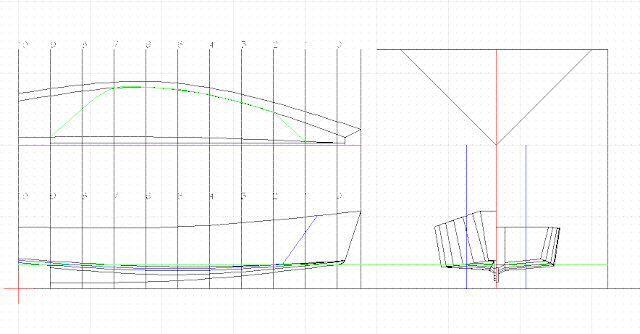Quick
and Dirty
When
I first approached this design I took the section lines of the skiff,
and
simply rounded the chine corners. Then I adjusted the rounding so
that the curves were parallel. I also narrowed the pram bow at the
waterline to give a finer entry
I
then went through the process of waterlines, buttocks and diagonals
to get this,
Compare that to this, which is the hull we've developed over the past few weeks
Here's a comparison of the sections side by side, the red being the lines developed from the skiff by rounding and the black being our skiff, and also superimposed.
On
the face of it I can't see much difference and it was very much
quicker. Our skiff is a little finer in the bows and the Q&D version has a bit more displacement, that's about it.
Now
that that is done I will run some numbers on the two versions to see
what difference, if any, there is.










